Main Page: Difference between revisions
Pbc captain (talk | contribs) No edit summary |
Pbcjohnston (talk | contribs) →Endorsements: Added NSL section |
||
| (243 intermediate revisions by 3 users not shown) | |||
| Line 1: | Line 1: | ||
{{#seo:|title=A Photographic Essay of United States Navy Submarines 1900-1941 - PigBoats.COM|keywords=submarine photographs, historical submarines, submarine heritage, early submarine technology, US Navy submarine history}} | |||
{{#seo:|description=The men, the boats, the technology, the history, and the heritage of the U.S. Submarine Service.}} | |||
[[File:New Header 1 Main.jpg|center|alt=submarines history pigboats]] | |||
<center><span style="color:#C10708"> | |||
<span style = "font-family:times new roman><span style="font-size:35px">A Photographic Essay of United States Navy Submarines 1900-1941</span> | |||
<br> | |||
__NOTOC__ | |||
[[File:Subs bottom line 2.jpg]] | |||
<div style="text-align: center;"><span style="color:#00008B"><span style="font-size:25px"><span style = "font-family:times new roman>See the latest updates [[Latest Updates|'''at this link!''']] | |||
</div><br> | |||
<div style="text-align: center;"><span style="color:#00008B"><span style="font-size:25px"><span style = "font-family:times new roman>Questions, comments? Let us know [mailto:webmaster@pigboats.com '''here''']</div><br> | |||
<div style="text-align: center;"><span style="color:#00008B"><span style="font-size:25px"><span style = "font-family:times new roman>Follow us on [https://www.facebook.com/profile.php?id=61565276193946 '''Facebook'''] </div> | |||
<center> | <center> | ||
< | <gallery mode="nolines" perrow=3 widths="30px" heights="30px"> | ||
File:Facebook-circle-logo-png.png | |||
</gallery> | |||
</ | |||
</center> | </center> | ||
<center> < | <div style="text-align: center;"><span style="color:#00008B"><span style="font-size:25px"><span style = "font-family:times new roman> | ||
[https://pigboats.com/index.php?title=Salute_the_Submarine '''Salute the Submarine!''']</div> | |||
[[File:Subs bottom line 2.jpg]] | |||
===<div style="text-align: justify;"><span style="color:#000000"><big>Welcome to PigBoats.COM!!</big></span>=== | |||
<div style="text-align: justify;"><span style="color:#00008B">This website covers the early history of the United States Navy Submarine Service. It was created in 1998 by Ric Hedman as a photographic essay about United States Navy submarines beginning with the year 1900 and working up to and through the year 1941. The World War II era has been extensively covered by other sites and in many excellent books, so we drew the line at the last boats built before the war started. There are some detours into later eras, but the emphasis remains on the early years. The page is also about the men who sailed these submarines. We do not know or remember most of the men's names you will see on these pages, but we have tried to pull their faces out of the crowd. Where the names are known we note them. We emphasize accuracy in our work, and everything that you will see here is as historically correct as we can make it. We are not all-seeing or all-knowing so [mailto:webmaster@pigboats.com '''please contact us'''] if you have additional or clarifying information.<br><br> | |||
Why are early submarines called Pigboats? For an explanation of that term, please see [[What Is A PigBoat|'''this page.''']] | |||
<center>[[File:RWB Starbar ver 3.jpg|300px]]</center> | |||
USN veteran submariners and historians [[PigBoats Staff|'''Ric Hedman and Dave Johnston are the webmasters''']]. Friends for nearly 25 years, this site is a passion for us. We have poured our heart and soul into making this the best USN submarine history site on the web. We do not sell anything and do not accept advertisements; we are entirely self-funded. It is all about the men, the boats, the technology, and our rich and varied heritage and history. | |||
There is a lot to see here so we have formatted it in an "encyclopedia" style. The key to navigating the site is the Navigation box on the left that will take you to our many sections, or you can use the Search box at the top of each page. Longer pages will have a Table of Contents at the top which will allow you to skip to sections that you want to see. All of the submarine pages are listed under the category "The Submarines". Each class page will have all boats of that class listed. The individual boat pages can be accessed by clicking on the "See more" links for each boat. All photos are expandable by clicking on them, giving you the highest resolution that we have. There are numerous links to other pages and relevant sites and those links will be in '''bold text'''. The "Latest Update" section at the top will show you our latest work. | |||
[[File:tosea2 color.jpg|right|500px|class=picture|USS K-3 heading out with crew on aft deck. circa 1915]] | |||
PigBoats.COM | Here at PigBoats.COM you will notice several colorized images. There are few original color photographs from the Pigboat era, but with the new AI technology becoming available we are able to add color to older images and it helps us to see and visualize what the submarines, the men, and the service life in those days was like. Too often when we see old pictures and films we think of history as being black and white when, in fact, history was just as colorful as life is today. We do not intend to color all images but a portion of the collection will have this feature added. | ||
PigBoats.COM is also proud to host works by other historians, including Jim Christley and Rich Hendren. We are also the exclusive host to Wolfgang Hechler’s monumental List of Commanding Officers, which lists all of the commanding officers of USN non-nuclear submarines. It is a work in progress, and periodic updates are made as new information is obtained.</div> | |||
<br> | |||
<center>[[File:RWB Starbar ver 3.jpg|300px]]</center> | |||
< | ===<div style="text-align: justify;"><span style="color:#000000"><big>Ric's Thoughts</big></span>=== | ||
[[File:F-2 crew 1.jpg|left|300px]] | |||
<div style="text-align: justify;"><span style="color:#00008B">When I first created this site many years ago I was struck by a statement from another submarine related page called [http://www.northofseveycorners.com/ntins/bbs-023.htm '''Sweet Bird Of Youth''']. It is a wistful review of how time passes and the effects that passage has on the young men I went to sea with. It has been part of my motivation in maintaining this site all this time. | |||
These sailors were the boys down the street, around the corner, out on the farms. They were the high school football heroes, and yes, even the geeks of their time. But they became one of the elite, one of that 1% that made the cut and became "Qualified in Submarines". They were, and still are, the best of the best of the United States Navy. | |||
It is important to remember that the submarines were just steel and machinery. It was the men who brought them to life and made them live. It is the men that gave them the romance, the mystery and the mystique. | |||
We have included a number of first-person accounts on some of the pages of what life was like aboard an S or R or even a K-class boat. There is also an account of what it was like being bombed on Sealion at Cavite Harbor in December, 1941. All this is most valuable since the men who sailed these boats have all commenced their own "eternal patrols". Preservation of these verbal images is important. | |||
Sailors, rest your oar! You stand relieved, we have the watch. ...and thank you!</div></center> | |||
[[File:Red bar sub new 2.jpg]] | |||
< | ===<div style="text-align: justify;"><span style="color:#000000"><big>Acknowledgements</big></span>=== | ||
<div style="text-align: justify;"><span style="color:#00008B">We would like to pass on our undying gratitude to Emilie and Aaron Salsitz, the owners of [https://icci.com/ '''ICCI.com'''], a computer hardware and software consulting firm based in Ann Arbor, MI. Their assistant Evan Guzek was also instrumental in the creation of this new site. Thank you so much for your belief in us, and your willingness to help get this project moving forward. | |||
<center>[[File:RWB_starbar.jpg]]</center> | |||
Thanks also go to Dr. Richard Hendren for allowing us to publish his [https://wiki.pigboats.com/images/f/f4/HENDREN-DISSERTATION-2021-corrected.pdf '''doctoral dissertation on the submarine H-1''']. It is an impressive work that covers not only the history of the H-class submarines but also outlines the archeology of H-1's wrecksite. | |||
<center>[[File:RWB_starbar.jpg]]</center> | |||
< | |||
Mr. Wolfgang Hechler of Lautertal, Germany has gifted us the use of his [[Commanding Officers of U.S. Submarines|'''database listing of the commanding officers''']] of the non-nuclear USN submarines, covering the years 1900-1988. It is a monumental work and we are very glad to be able to present it here, exclusively to PigBoats.COM. | |||
< | <center>[[File:RWB_starbar.jpg]]</center> | ||
Special thanks go out to Mr. Roland Goodbody, Manuscripts Curator, [https://library.unh.edu/find/archives/collections '''Milne Special Collections & Archives at the University of New Hampshire Library'''] and his staff and the University of New Hampshire for all their cooperation and kindness in helping us in this endeavor. All photos that are from the Milne Special Collections are their property and may not be reproduced without their permission. | |||
< | <center>[[File:RWB_starbar.jpg]]</center> | ||
[[File: | |||
< | |||
We would also like to thank Wendy Gulley, curator of [https://ussnautilus.org/ '''The US Navy Submarine Force Library & Museum'''] in Groton, Ct. for her kind indulgences in letting us use their archive. | |||
< | <center>[[File:RWB_starbar.jpg]]</center> | ||
This work has become a collaborative effort by virtue of its viewers offering help, suggestions and images and names for publication on the page. Correcting errors we may have not known about and offering explanations for things we didn't know. Thank you all. | |||
< | <center>[[File:RWB_starbar.jpg]]</center> | ||
'''Photos credited to the people who submitted them are their property, and may not be copied or reproduced without their permission unless the original photo came from the public domain such as The National Archives or the United States Navy.''' | |||
<center>'''No images may be downloaded and used for commercial purposes.'''</center> | |||
< | |||
[[File:Red bar sub new 2.jpg]] | |||
== | ===<div style="text-align: justify;"><span style="color:#000000"><big>Endorsements</big></span>=== | ||
< | <br> | ||
< | [[File:NHHC RGB Logo.jpg|left|300px|Naval History and Heritage Command]] | ||
<div style="text-align: justify;"><span style="color:#00008B">The Naval History and Heritage Command (NHHC), based at the Washington Navy Yard in the District of Columbia, is an Echelon II command with a mission of gathering, preserving, and disseminating our Naval heritage. Many of the photographs that we have collected here have come from their collections. In addition, they maintain the official copy of the Dictionary of American Naval Fighting Ships (DANFS), from which we have gathered much of the background information on the submarines we feature. [https://www.history.navy.mil/ '''Please check out their expansive site here'''.] | |||
[[File:Red bar sub new 2.jpg]] | |||
[[File:Seal_of_the_United_States_National_Archives_and_Records_Administration.svg.png|left|300px]] | |||
The National Archives and Records Administration (NARA) is the nation's primary records and image management service. They maintain an unbelievably vast database of records and photographs that have benefited PigBoats many times. You might be surprised at what you can find there. Check them out at the [https://www.archives.gov/ '''National Archives site.'''] | |||
[[File:Red bar sub new 2.jpg]] | |||
[[File:USSVI.png|left|300px]] | |||
The United States Submarine Veterans Incorporated is a fraternal/sororal organization of those Qualified in Submarines whose ''"purpose is to perpetuate the memory of our shipmates who gave their lives in the pursuit of their duties while serving their country"'', and to ''"provide a way for all Submariners to gather for their mutual benefit and enjoyment"''. USSVI also conducts charitable and community outreach projects designed to promote the service and provide community support. It is a tremendous organization and both webmasters are proud to be a member of its august ranks. If you have been priviledged to be awarded the Dolphins and wish to preserve our brotherhood/sisterhood, please consider joining at [https://www.ussvi.org/ '''this link''']. | |||
[[File:Red bar sub new 2.jpg]] | |||
[[File:NSL logo.png|left|300px]] | |||
The Naval Submarine League is a private, non-profit organization whose goals are to stimulate and promote awareness of the Submarine Service amongst the public, provide symposia on prefessional matters concerning the Force and undersea matters, to publicly recognize professional excellence in the Submarine Force, and to foster and preserve the history and heritage of the Force. They publish the peer-reviewed journal [https://navalsubleague.org/submarine-news/submarine-review/ '''The Submarine Review'''], an excellent forum for the discussion of issues related to the service, and webmaster David Johnston has been honored by having two articles and several letters published in the Review. Please take the time to review their site [https://navalsubleague.org/ '''at this link'''], and if you are a submariner or potential corporate sponsor, consider joining. It is worth your time. | |||
[[File:Red bar sub new 2.jpg]] | |||
[[File:Navsource 2.jpg|left|300px|Navsource.net]] | |||
Navsource Naval History is one of the premier sites on the web for images of our warships. It is comprehensive and covers nearly every vessel ever commissioned into the U.S. Navy. We have collaborated with their webmasters on numerous occasions. [https://navsource.net/ '''Please visit their site here''']. | |||
[[File:Red bar sub new 2.jpg]] | |||
[[File:Underway-Shadow.jpg|left|300px|On Eternal Patrol]] | |||
[https://www.oneternalpatrol.com/ '''On Eternal Patrol.com'''] maintains a database of every U.S. submariner that has lost their life in service of this country, both wartime and peacetime. It is an essential resource for anyone who has lost a loved one in the submarine service, and we have used information from them numerous times. We fully support their mission and cause and make contributions of material, (information or photos), when we run across it. | |||
[[File:Red bar sub new 2.jpg]] | |||
<center> | |||
Page created by:<br> | |||
<small>Ric Hedman & David Johnston<br> | |||
<sup>©</sup>1999 - 2025 - PigBoats.COM. All rights reserved.<br> | |||
Mountlake Terrace, WA, Norfolk, VA<br> | |||
[mailto:webmaster@pigboats.com '''webmaster@pigboats.com''']</small> | |||
</center> | |||
[[File:Subs bottom line 2.jpg]] | |||
Latest revision as of 11:50, 25 June 2025

A Photographic Essay of United States Navy Submarines 1900-1941
Welcome to PigBoats.COM!!
Why are early submarines called Pigboats? For an explanation of that term, please see this page.
USN veteran submariners and historians Ric Hedman and Dave Johnston are the webmasters. Friends for nearly 25 years, this site is a passion for us. We have poured our heart and soul into making this the best USN submarine history site on the web. We do not sell anything and do not accept advertisements; we are entirely self-funded. It is all about the men, the boats, the technology, and our rich and varied heritage and history.
There is a lot to see here so we have formatted it in an "encyclopedia" style. The key to navigating the site is the Navigation box on the left that will take you to our many sections, or you can use the Search box at the top of each page. Longer pages will have a Table of Contents at the top which will allow you to skip to sections that you want to see. All of the submarine pages are listed under the category "The Submarines". Each class page will have all boats of that class listed. The individual boat pages can be accessed by clicking on the "See more" links for each boat. All photos are expandable by clicking on them, giving you the highest resolution that we have. There are numerous links to other pages and relevant sites and those links will be in bold text. The "Latest Update" section at the top will show you our latest work.

Here at PigBoats.COM you will notice several colorized images. There are few original color photographs from the Pigboat era, but with the new AI technology becoming available we are able to add color to older images and it helps us to see and visualize what the submarines, the men, and the service life in those days was like. Too often when we see old pictures and films we think of history as being black and white when, in fact, history was just as colorful as life is today. We do not intend to color all images but a portion of the collection will have this feature added.
PigBoats.COM is also proud to host works by other historians, including Jim Christley and Rich Hendren. We are also the exclusive host to Wolfgang Hechler’s monumental List of Commanding Officers, which lists all of the commanding officers of USN non-nuclear submarines. It is a work in progress, and periodic updates are made as new information is obtained.
Ric's Thoughts
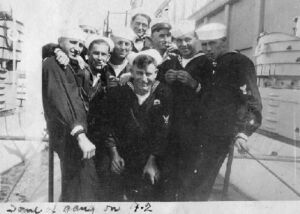
These sailors were the boys down the street, around the corner, out on the farms. They were the high school football heroes, and yes, even the geeks of their time. But they became one of the elite, one of that 1% that made the cut and became "Qualified in Submarines". They were, and still are, the best of the best of the United States Navy.
It is important to remember that the submarines were just steel and machinery. It was the men who brought them to life and made them live. It is the men that gave them the romance, the mystery and the mystique.
We have included a number of first-person accounts on some of the pages of what life was like aboard an S or R or even a K-class boat. There is also an account of what it was like being bombed on Sealion at Cavite Harbor in December, 1941. All this is most valuable since the men who sailed these boats have all commenced their own "eternal patrols". Preservation of these verbal images is important.
Sailors, rest your oar! You stand relieved, we have the watch. ...and thank you!Acknowledgements
Thanks also go to Dr. Richard Hendren for allowing us to publish his doctoral dissertation on the submarine H-1. It is an impressive work that covers not only the history of the H-class submarines but also outlines the archeology of H-1's wrecksite.
Mr. Wolfgang Hechler of Lautertal, Germany has gifted us the use of his database listing of the commanding officers of the non-nuclear USN submarines, covering the years 1900-1988. It is a monumental work and we are very glad to be able to present it here, exclusively to PigBoats.COM.
Special thanks go out to Mr. Roland Goodbody, Manuscripts Curator, Milne Special Collections & Archives at the University of New Hampshire Library and his staff and the University of New Hampshire for all their cooperation and kindness in helping us in this endeavor. All photos that are from the Milne Special Collections are their property and may not be reproduced without their permission.
We would also like to thank Wendy Gulley, curator of The US Navy Submarine Force Library & Museum in Groton, Ct. for her kind indulgences in letting us use their archive.
This work has become a collaborative effort by virtue of its viewers offering help, suggestions and images and names for publication on the page. Correcting errors we may have not known about and offering explanations for things we didn't know. Thank you all.
Photos credited to the people who submitted them are their property, and may not be copied or reproduced without their permission unless the original photo came from the public domain such as The National Archives or the United States Navy.
Endorsements
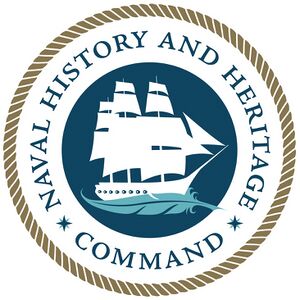
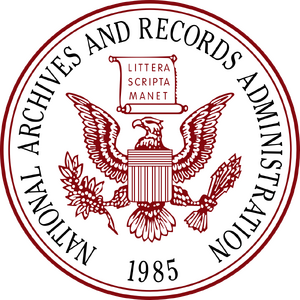
The National Archives and Records Administration (NARA) is the nation's primary records and image management service. They maintain an unbelievably vast database of records and photographs that have benefited PigBoats many times. You might be surprised at what you can find there. Check them out at the National Archives site.
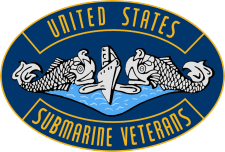
The United States Submarine Veterans Incorporated is a fraternal/sororal organization of those Qualified in Submarines whose "purpose is to perpetuate the memory of our shipmates who gave their lives in the pursuit of their duties while serving their country", and to "provide a way for all Submariners to gather for their mutual benefit and enjoyment". USSVI also conducts charitable and community outreach projects designed to promote the service and provide community support. It is a tremendous organization and both webmasters are proud to be a member of its august ranks. If you have been priviledged to be awarded the Dolphins and wish to preserve our brotherhood/sisterhood, please consider joining at this link.

The Naval Submarine League is a private, non-profit organization whose goals are to stimulate and promote awareness of the Submarine Service amongst the public, provide symposia on prefessional matters concerning the Force and undersea matters, to publicly recognize professional excellence in the Submarine Force, and to foster and preserve the history and heritage of the Force. They publish the peer-reviewed journal The Submarine Review, an excellent forum for the discussion of issues related to the service, and webmaster David Johnston has been honored by having two articles and several letters published in the Review. Please take the time to review their site at this link, and if you are a submariner or potential corporate sponsor, consider joining. It is worth your time.
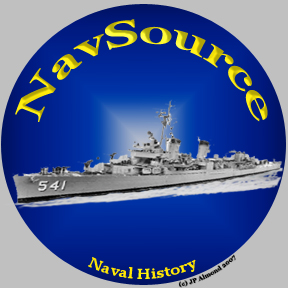
Navsource Naval History is one of the premier sites on the web for images of our warships. It is comprehensive and covers nearly every vessel ever commissioned into the U.S. Navy. We have collaborated with their webmasters on numerous occasions. Please visit their site here.
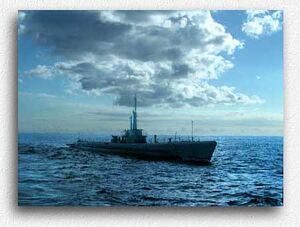
On Eternal Patrol.com maintains a database of every U.S. submariner that has lost their life in service of this country, both wartime and peacetime. It is an essential resource for anyone who has lost a loved one in the submarine service, and we have used information from them numerous times. We fully support their mission and cause and make contributions of material, (information or photos), when we run across it.
Page created by:
Ric Hedman & David Johnston
©1999 - 2025 - PigBoats.COM. All rights reserved.
Mountlake Terrace, WA, Norfolk, VA
webmaster@pigboats.com